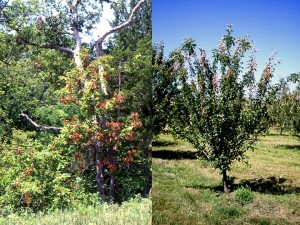–by Dr. Bob Bauernfeind
It is a few days past a month since my first encounter with the Brood IV periodical cicadas. What an enjoyable treat it was living with the “little beauties”. It was impossible to escape the cacophony of millions/billions(?) of male periodicals “singing-their-songs” in tree tops.
The response to the oft asked question, “How long will they be making a ruckus?”, was that by the end of June, they will have run their course.
And so it has come to pass. Off my back deck, the nearby cassini ceased their calling on June 18 (this cluster was restricted to just several trees in the ravine area immediately behind my house). On Father’s Day, I called my visiting daughter out —- to hear one (maybe two) septendecim(s) calling further down the way. Nothing since.
I have purposely driven several routes where the blare of periodicals was inescapable from both sides of the road. Over the past week, the calling diminished to just sounds from occasional groves. And the last 3 days, all has been quiet. While there may be some occasional reports of still active pocket populations of periodicals, those too will soon cease. Essentially, the 2015 emergence has come-and-gone.
What has been left behind are the eggs that were inserted into tips of branches. This will become evident with the eventual appearance of dead brown terminal portions of branches. People should not be concerned about the health and vigor of their trees. Just consider this to be a minor “natural pruning”. The tiny nymphs that hatch and drop to the ground will burrow into the soil and begin their 16-year developmental cycle which will culminate with their emergence in 2032, and the next Brood IV of 17-year periodical cicadas.
